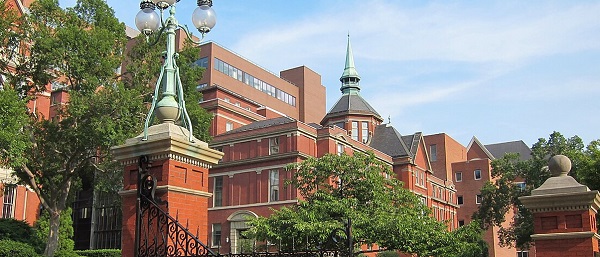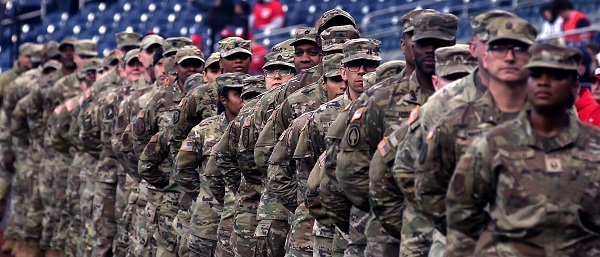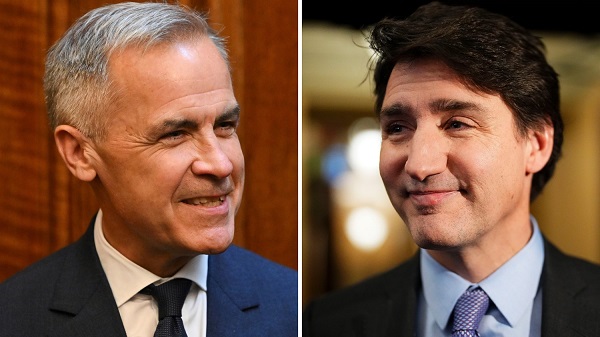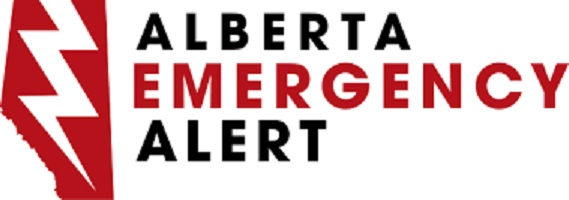Education
Simply throwing more money at schools will not increase student test scores

From the Fraser Institute
Alberta, Quebec and Ontario had the highest average test scores, with each spending markedly less per student than Manitoba (C$15,473) and Saskatchewan (C$17,194), the two highest-spending provinces who both had significantly lower test scores than lowest-spending B.C. (C$12,132).
“If you think education is expensive, try ignorance” was a popular bumper sticker back in the day. These days there’s broad acceptance of the need for adequate spending on this inherently expensive process. But do we get our money’s worth? Do Canada and the provinces get a good return on their education spending or should we spend more?
To help answer that question, it helps to broaden our perspective beyond Canada’s borders. According to a recent study published by the Fraser Institute, in 2018 (the latest year of complete and comparable data) there was a wide range of K-12 education spending among 33 high-income countries, ranging from Luxembourg (US$21,968 per student) to Lithuania, (US$6,551 per student). Canada (US$11,771) ranked 14th-lowest, just above the average and well below higher-spending Norway, Austria, Korea, Denmark and the United States.
There was less variation in provincial spending, with highest-spending Saskatchewan and Manitoba spending similar amounts to the U.S. and Germany, and British Columbia spending notably less, close to amounts spent by Finland and Japan.
So, Canada’s K-12 spending was in the mid-range of spending among high-income countries. What did we get, in terms of student performance, for this level of spending?
Based on results of the Programme for International Student Assessment (PISA), which tests 15-year-old students worldwide every three years on reading, math and science, Canada’s average test performance was significantly higher than most other countries—specifically, Canada’s 15-year-olds had higher average scores than their peers in 11 higher-spending countries including Sweden, Germany, the United Kingdom and the U.S.
There was a similar pattern between school spending and student performance in the provinces. Alberta, Quebec and Ontario had the highest average test scores, with each spending markedly less per student than Manitoba (C$15,473) and Saskatchewan (C$17,194), the two highest-spending provinces who both had significantly lower test scores than lowest-spending B.C. (C$12,132).
Of course, due to the many differences between education systems in different countries, global comparisons are less than precise, but clearly higher K-12 spending is not reliably associated with higher test scores. And there’s obviously a lot more to good education than doing well on standardized tests. Yet doing well in reading, math and science—the core PISA subjects—is important because these subjects provide a necessary foundation for future higher-level study and employment.
These findings raise a fundamental question. How can we close the gaps between test scores among countries and provinces if poorer-performing systems already spend more than those achieving higher scores? Given the poor track record of popular and expensive reforms such as smaller class sizes and extended teacher education, there’s no obvious answer to this question. Simply shovelling more money into school budgets will not, by itself, make a difference unless effective ways to improve student performance can be found.
Instead, education systems should encourage greater school-level decision-making to better serve local circumstances. And there’s also much to gain by paying at least as much attention to student performance as spending.
Author:
Education
Johns Hopkins University Announces Free Tuition For Most Students


From the Daily Caller News Foundation
Johns Hopkins University (JHU) announced on Thursday it is making tuition free for families earning less than $200,000 and will waive both tuition and living expenses for those making less than $100,000.
The university stated that “a majority of American families” will qualify for the fee exemption, allowing most students to attend without contributing a single dollar. The decision is meant to help recruit “the best and brightest students to Johns Hopkins irrespective of their financial wherewithal.”
“Trying to understand financial aid offers can be overwhelming,” David Phillips, vice provost for admissions and financial aid at JHU, said in the announcement. “A big goal here is to simplify the process. We especially want to reach students and families from disadvantaged backgrounds, rural locations, and small towns across America who may not know that a Hopkins degree is within reach.”
Dear Readers:
As a nonprofit, we are dependent on the generosity of our readers.
Please consider making a small donation of any amount here.
Thank you!
In 2018, Michael Bloomberg donated nearly $2 billion to the university, the largest ever single gift to a U.S. university. JHU said it used this money “to become permanently need blind and no-loan in financial aid.”
The university also receives the most federal funding of any university, raking in more than $3 billion from the government in fiscal year 2023 for research and development alone. This is more than double what the next highest recipient of federal funding that year, the University of Washington, received.
Despite this, JHU in June complained that federal funding cuts forced it to institute a hiring freeze and pause annual pay increases for employees. In its message to the community at the time, the university also mentioned its disagreement with “recent efforts to limit or withhold visas from the international students and scholars.”
Some universities admit mass numbers of foreign students in order to pad their pockets, as such students often pay full tuition and fee costs without financial assistance.
Education
Why classroom size isn’t the issue teacher unions think it is

This article supplied by Troy Media.
The real challenge is managing classrooms with wide-ranging student needs, from special education to language barriers
Teachers’ unions have long pushed for smaller class sizes, but the real challenge in schools isn’t how many students are in the room—it’s how complex those classrooms have become. A class with a high proportion of special needs students, a wide range of academic levels or several students learning English as a second language can be far more difficult to teach than a larger class
where students are functioning at a similar level.
Earlier this year, for example, the Elementary Teachers’ Federation of Ontario announced that smaller class sizes would be its top bargaining priority in this fall’s negotiations.
It’s not hard to see why unions want smaller classes. Teaching fewer students is generally easier than teaching more students, which reduces the workload of teachers. In addition, smaller classes require hiring more teachers, and this amounts to a significant financial gain for teachers’ unions. Each teacher pays union dues as part of membership.
However, there are good reasons to question the emphasis on class size. To begin with, reducing class size is prohibitively expensive. Teacher salaries make up the largest percentage of education spending, and hiring more teachers will significantly increase the amount of money spent on salaries.
Now, this money could be well spent if it led to a dramatic increase in student learning. But it likely wouldn’t. That’s because while research shows that smaller class sizes have a moderately beneficial impact on the academic performance of early years students, there is little evidence of a similar benefit for older students. Plus, to get a significant academic benefit, class sizes need to be reduced to 17 students or fewer, and this is simply not financially feasible.
In addition, not only does reducing class sizes mean spending more money on teacher compensation (including salaries, pensions and benefits), but it also leads to a decline in average teacher experience and qualifications, particularly during teacher shortages.
As a case in point, when the state of California implemented a K-3 class-size reduction program in 1996, inexperienced or uncertified teachers were hired to fill many of the new teaching positions. In the end, California spent a large amount of money for little measurable improvement in academic performance. Ontario, or any other province, would risk repeating California’s costly experience.
Besides, anyone with a reasonable amount of teaching experience knows that classroom complexity is a much more important issue than class size. Smaller classes with a high percentage of special needs students are considerably more difficult to teach than larger classes where students all function at a similar academic level.
The good news is that some teachers’ unions have shifted their focus from class size to classroom complexity. For example, during the recent labour dispute between the Saskatchewan Teachers’ Federation (STF) and the Saskatchewan government, the STF demanded that a classroom complexity article be included in the provincial collective agreement. After the dispute went to binding arbitration, the arbitrator agreed with the STF’s request.
Consequently, Saskatchewan’s new collective agreement states, among other things, that schools with 150 or more students will receive an additional full-time teacher who can be used to provide extra support to students with complex needs. This means that an extra 500 teachers will be hired across Saskatchewan.
While this is obviously a significant expenditure, it is considerably more affordable than arbitrarily reducing class sizes across the province. By making classroom complexity its primary focus, the STF has taken an important first step because the issue of classroom complexity isn’t going away.
Obviously, Saskatchewan’s new collective agreement is far from a panacea, because there is no guarantee that principals will make the most efficient use of these additional teachers.
Nevertheless, there are potential benefits that could come from this new collective agreement. By getting classroom complexity into the collective agreement, the STF has ensured that this issue will be on the table for the next round of bargaining. This could lead to policy changes that go beyond hiring a few additional teachers.
Specifically, it might be time to re-examine the wholesale adoption of placing most students, including those with special needs, in regular classrooms, since this policy is largely driving the increase in diverse student needs. While every child has the right to an education, there’s no need for this education to look the same for everyone. Although most students benefit from being part of regular academic classes, some students would learn better in a different setting that takes their individual needs into consideration.
Teachers across Canada should be grateful that the STF has taken a step in the right direction by moving beyond the simplistic demand for smaller class sizes by focusing instead on the more important issue of diverse student needs.
Michael Zwaagstra is a senior fellow with the Frontier Centre for Public Policy.
Troy Media empowers Canadian community news outlets by providing independent, insightful analysis and commentary. Our mission is to support local media in helping Canadians stay informed and engaged by delivering reliable content that strengthens community connections and deepens understanding across the country
-

 Daily Caller1 day ago
Daily Caller1 day agoDemocrats Explicitly Tell Spy Agencies, Military To Disobey Trump
-

 Alberta1 day ago
Alberta1 day agoAlberta on right path to better health care
-

 Daily Caller1 day ago
Daily Caller1 day agoALAN DERSHOWITZ: Can Trump Legally Send Troops Into Our Cities? The Answer Is ‘Wishy-Washy’
-

 Alberta2 days ago
Alberta2 days agoAlbertans choose new licence plate design with the “Strong and Free” motto
-

 Crime23 hours ago
Crime23 hours ago‘Modern-Day Escobar’: U.S. Says Former Canadian Olympian Ran Cocaine Pipeline with Cartel Protection and a Corrupt Toronto Lawyer
-

 Business2 days ago
Business2 days agoClimate Climbdown: Sacrificing the Canadian Economy for Net-Zero Goals Others Are Abandoning
-

 Great Reset2 days ago
Great Reset2 days agoAre climate-obsessed elites losing their grip over global politics?
-

 Alberta1 day ago
Alberta1 day agoAlberta Emergency Alert test – Wednesday at 1:55 PM











